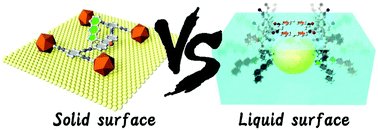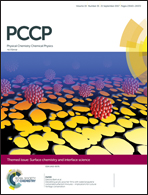Solid surface vs. liquid surface: nanoarchitectonics, molecular machines, and DNA origami
Abstract
The investigation of molecules and materials at interfaces is critical for the accumulation of new scientific insights and technological advances in the chemical and physical sciences. Immobilization on solid surfaces permits the investigation of different properties of functional molecules or materials with high sensitivity and high spatial resolution. Liquid surfaces also present important media for physicochemical innovation and insight based on their great flexibility and dynamicity, rapid diffusion of molecular components for mixing and rearrangements, as well as drastic spatial variation in the prevailing dielectric environment. Therefore, a comparative discussion of the relative merits of the properties of materials when positioned at solid or liquid surfaces would be informative regarding present-to-future developments of surface-based technologies. In this perspective article, recent research examples of nanoarchitectonics, molecular machines, DNA nanotechnology, and DNA origami are compared with respect to the type of surface used, i.e. solid surfaces vs. liquid surfaces, for future perspectives of interfacial physics and chemistry.

- This article is part of the themed collections: PCCP Perspectives, 2017 PCCP HOT Articles and Surface chemistry and interface science


 Please wait while we load your content...
Please wait while we load your content...